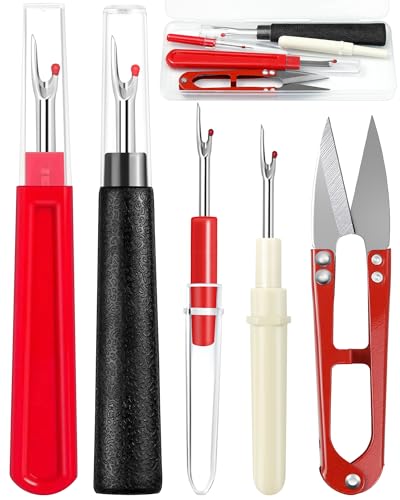Adding a gusset can transform your bags and garments, providing extra space and flexibility where you need it most. I’ve always loved how a well-sewn gusset can enhance both the functionality and the look of a piece. Whether you’re crafting a tote or tailoring a pair of pants, mastering this technique opens up a world of creative possibilities.
Understanding Gussets
A gusset is a triangular or diamond-shaped fabric insert used to add depth and flexibility to bags and garments. In bags, gussets expand the body, allowing for increased storage capacity and easier access. For garments, gussets enhance mobility by providing extra room at joints like underarms or crotches.
Types of Gussets
- Side Gussets: Located on the sides of bags or garments, they provide additional width and accommodate bulkier items.
- Bottom Gussets: Found at the base of bags, they offer stability and prevent deformation when carrying heavy loads.
- Knee Gussets: Integrated into pants or shorts, they improve comfort and movement during activities.
- Armhole Gussets: Sewn into sleeves, they allow for a wider range of motion in garments.
Materials and Construction
Selecting the right material ensures durability and functionality. Common materials include:
- Cotton: Offers breathability and ease of sewing, suitable for casual bags and lightweight garments.
- Nylon: Provides water resistance and strength, ideal for outdoor gear and travel bags.
- Leather: Adds a stylish and sturdy element, perfect for high-end bags and durable apparel.
Benefits of Using Gussets
Incorporating gussets offers several advantages:
- Increased Capacity: Expands the usable space in bags, accommodating more items without altering the overall design.
- Enhanced Comfort: Provides additional room in garments, reducing strain and improving fit.
- Improved Durability: Distributes stress across seams, minimizing wear and tear in high-movement areas.
By understanding the different types and benefits of gussets, I can effectively incorporate them into my sewing projects, enhancing both functionality and aesthetic appeal.
Tools and Materials Needed
Gathering the right tools and materials ensures a smooth sewing process. Here’s what you’ll need to get started.
Selecting the Right Fabric
Choosing the appropriate fabric affects the durability and flexibility of your gusset. Opt for materials like:
- Cotton: Easy to work with and breathable, ideal for lightweight bags and garments.
- Nylon: Durable and water-resistant, perfect for outdoor bags.
- Leather: Offers a sturdy and stylish option for high-end garments and accessories.
- Stretch Fabrics: Provide added flexibility for activewear gussets.
Essential Sewing Tools
- Sewing Machine: A reliable machine with a zigzag stitch option for stretchy fabrics.
- Scissors: Sharp fabric scissors for precise cutting.
- Measuring Tools: A measuring tape and ruler for accurate measurements.
- Pins and Needles: High-quality pins and needles suitable for your chosen fabric.
- Thread: Strong, matching thread to secure the gusset.
- Marking Tools: Fabric chalk or markers to outline your gusset shape.
- Iron and Ironing Board: For pressing seams and ensuring a clean finish.
Measuring and Cutting the Gusset
Accurate measurements and precise cutting are crucial for a perfect gusset.
Determine Gusset Dimensions
Measure the required depth and width based on your project.
- Depth: For bags, calculate the storage capacity needed. For garments, assess the flexibility required.
- Width: Match the gusset width to the corresponding sections.
Add a 0.5-inch seam allowance to each side.
Prepare the Fabric
Choose the appropriate fabric and lay it flat.
- Align Patterns: Ensure patterns or prints align correctly.
- Smooth Surface: Remove wrinkles to maintain accuracy.
Mark the Gusset
Outline the gusset shape on the fabric with a fabric marker.
- Shape Selection: Use diamond, triangular, or rectangular shapes as needed.
- Double-Check: Verify all measurements before marking.
Cut the Gusset
Cut along the marked lines with sharp scissors.
- Straight Cuts: Maintain clean edges for easy sewing.
- Safety First: Use scissors carefully to prevent accidents.
Sewing Techniques
Mastering sewing techniques ensures your gusset is both functional and polished. Here’s how I prepare the fabric and attach the gusset for a seamless finish.

Preparing the Fabric
I start by selecting the appropriate fabric based on the project’s requirements. Pre-washing the fabric prevents shrinkage later. Next, I iron the fabric to remove any wrinkles, ensuring accurate cutting. Measuring and marking are crucial; I use a fabric marker to outline the gusset shape precisely. Cutting along the marked lines with sharp scissors guarantees clean edges, which is essential for a professional appearance.
Attaching the Gusset
Positioning the gusset correctly is key. I align the gusset edges with the corresponding sections of the bag or garment, ensuring symmetry. Using high-quality pins, I secure the gusset in place to prevent shifting during sewing. I sew the gusset with a straight stitch, maintaining a consistent seam allowance of 0.5 inches for durability. After stitching, I trim any excess threads and press the seams with an iron to create a smooth, finished look.
Finishing Touches
Finalizing the gusset integration ensures a polished and durable result. Begin by pressing all seams with an iron set to the appropriate temperature for your fabric. This step removes wrinkles and sets the stitches, providing a smooth appearance.
Inspect the gusset area for any loose threads and trim them for a clean finish. Reinforce the seams by backstitching at the beginning and end of each seam line, enhancing the gusset’s strength and longevity.
If adding closures, align and attach them securely. For instance, sew zippers flush with the edge or install buttons evenly spaced. Ensure all hardware functions smoothly to maintain the bag’s or garment’s usability.
« Ultimate Guide: What Is a Whipstitch and How to Use It Perfectly
What Are Sewing Patterns and Where to Find Them? 7 Ultimate Resources »
Apply any decorative elements, such as topstitching or trim, to highlight the gusset. Consistent stitching patterns not only enhance aesthetics but also reinforce the structural integrity of the piece.
Finally, give the entire project a thorough press. Focus on the gusset and surrounding areas to ensure all elements lie flat and maintain their shape. Proper pressing seals the finishing touches, resulting in a professional and refined appearance.
Conclusion
Sewing a gusset has been a rewarding addition to my projects. It not only boosts functionality but also adds that extra touch of craftsmanship. Seeing the increase in space and flexibility makes all the careful steps worth it.
I encourage you to try adding gussets to your own bags and garments. With the right materials and a bit of patience you’ll be amazed at the difference it can make. Happy sewing and enjoy creating pieces that are both beautiful and practical.













